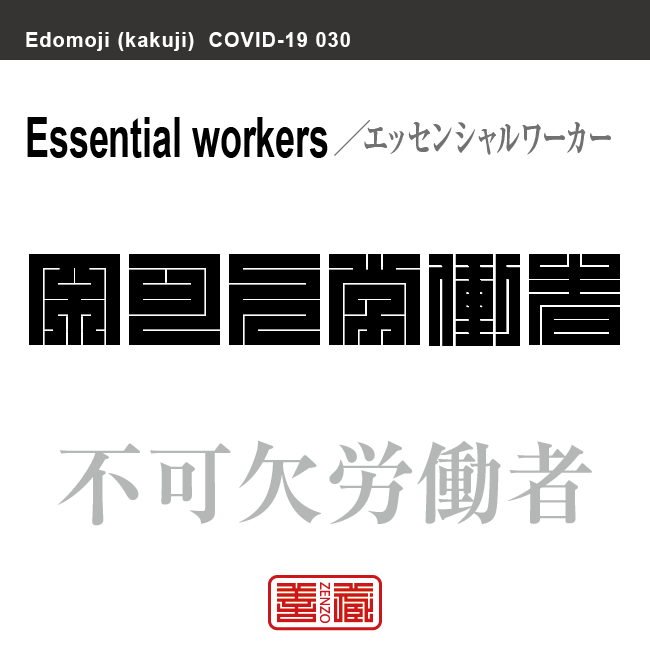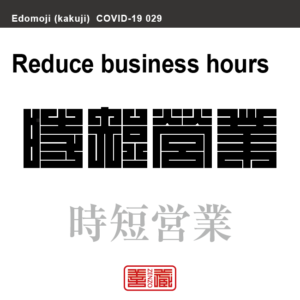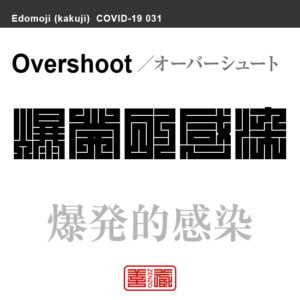不可欠労働者 エッセンシャルワーカー/ふかけつろうどうしゃ 角字で新型コロナウイルス感染症関連用語、漢字表記

不可欠労働者
エッセンシャルワーカー/ふかけつろうどうしゃ
Essential workers
Unicode: [不_0x4E0D][可_0x53EF][欠_0x6B20][労_0x52B4][働_0x50CD][者_0x8005]
社会生活を成り立たせるために欠かせない仕事に従事する人のこと。一般的には医療従事者、福祉・介護従事者、農業・食品加工業の従事者、交通やエネルギー産業の従事者、小売店の販売員、配達員などです。
コロナの影響で企業の業績が悪化したため、求人が大幅に減りましたが、緊急事態宣言が出された4月以降、エッセンシャルワーカーの職種の一部で求人割合や仕事検索割合が大きくなり、特に「介護」「看護」「ドラッグストア」「スーパーマーケット」「コンビニ」「配達・デリバリー」に関する求人は大きく増加したそうです。
角字とは?
江戸時代に誕生した角字は、正方形のグリッド内にほぼ水平・垂直のラインのみで文字(漢字)が表現されるグラフィックアートです。
正方形という限られた空間の中に、あらゆる文字を閉じ込めようとするグラフィックデザインは、前述した、ミニマムな物に対する日本人特有のこだわりが随所に感じられます。
そのシンプルで有りながら、奥深い「角字」は多くの日本人を魅了し、お祭りで着る半被や印半纏(しるしばんてん)と言われる着物や、商標、印鑑、家紋、看板デザインなどに今日まで数多く使用されてきました。
What is Kakuji?
There is a style of penmanship called “Kakuji” in Japan. Edo-born Kakuji is a graphicart that expresses letters (kanji) with almost horizontal and vertical lines only.
The design which bases on many straight lines seems simple, or too plain even at its first glance; yet this beautiful artistic penmanship that encompasses the aesthetic of the Japanese in the Edo era, also known as “Iki”, and playfulness has long been inherited to this day, thanks to the masteries’ long years of efforts in training and refinement.
Kakuji with its simplicity and depth is used for designs such as trademark, hanko stamp, family crest and signboard.































































 2文字コード:MZ 3文字コード:MOZ 数字:508 ITU:258 ccTLD:.mz
2文字コード:MZ 3文字コード:MOZ 数字:508 ITU:258 ccTLD:.mz







































































































































